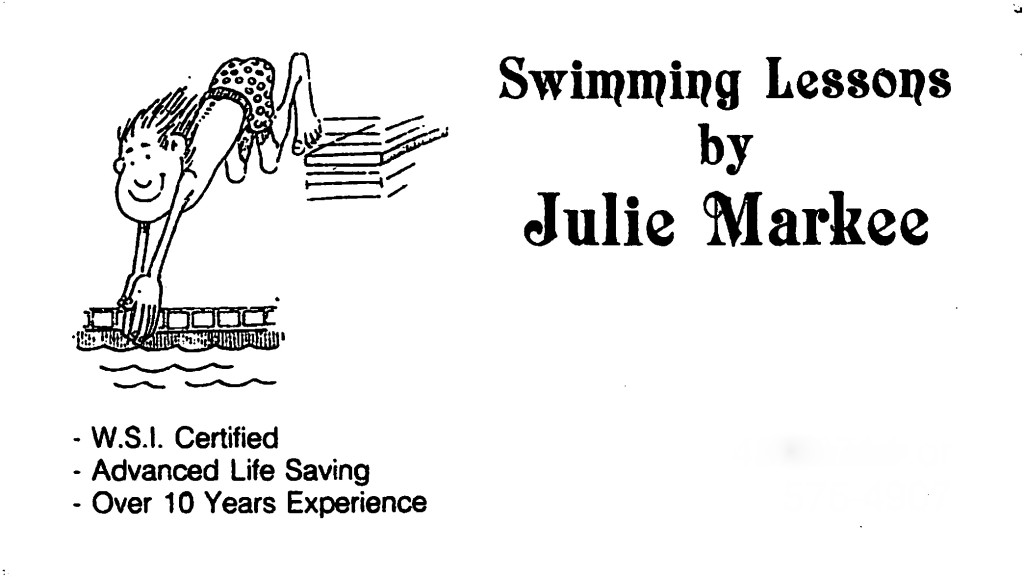
by Julie | Feb 18, 2016 | Consulting, Employee Training, Management
Most manufacturers will admit that they don’t do a good job training their employees. It isn’t that they don’t see the value, it is rather that the task feels overwhelming and they don’t know where to start. But, like any other journey worth taking, it starts with a single step. Listed below are some steps you can take to improve your operator training program.
- Pick a Starting Point. What is the area that is causing you the biggest issue? Is there a department with high turnover? How about high scrap? Is there a bottle neck in your plant that shouldn’t be there?
- Assess the Situation. What are the tasks that need to be performed in a particular department? What are the skills needed in order to complete those tasks?
- Develop the materials. Review the established procedures against the current process and if a discrepancy is found, decide which should be included. Once that is complete, ensure the procedures are up to date. In addition to procedures, other training materials which may be of use include videos, standard work or visual aids.
- Quantify the skill levels. For each of the tasks, quantify the skill level and determine how the skill level will be measured. The skill level should range from Untrained to Fully Trained, with various levels in between. Using the defined skill levels, assess each employee against each of the tasks.
- Complete the skills matrix. Once each operator has been measured against each task, the skills matrix can be completed. And from the completed matrix, the gaps for the department have been identified and an action plan can be developed to address those gaps.
I would agree that implementing or improving an operator training system may seem daunting, but, having a process which results in fully trained operators makes the journey much easier to start.
For more practical tips for manufacturing professionals to attract, train and retain your hourly workforce, go to www.keyprocessinnovations.com.

by Julie | Feb 11, 2016 | Consulting, Employee Training, Interim Management, Management
The task of operator training is typically delegated to the department supervisor or lead. Rarely, if ever, is the supervisor or lead given the proper tools to be an effective trainer. And since the supervisor is also evaluating the operator’s performance, the feedback loop on training effectiveness may be lost. Being an effective trainer goes beyond knowing the material. It requires an ability to communicate in such a way that the trainee can learn the required information.
Listed below are some suggestions on how ways to improve the effectiveness of your training.
- Ensure the trainer has the necessary skills to conduct operator training. Check out this blog for what I consider the necessary skills to be an effective trainer. In some cases, it may be necessary to delegate training to an individual who may not be a lead/supervisor in order to ensure the training is as effective as possible.
- Periodically observe the training being conducted and provide feedback for the trainer.
- If possible, also have the trainee provide feedback on the trainer.
- Make sure there is some way to demonstrate the operator has learned the necessary information in order to do this task on his or her own. This can be through a verbal test, written quiz or a demonstration.
- Invest in some “train the trainer” training so the supervisors and/or lead can develop their skills as a trainer.
Creating an environment of learning can go a long way towards improving the performance of your plant. Increasing the skills of your trainers will help operators learn faster, be more engaged and ultimately improve the bottom line. And isn’t that the name of the game?
For more practical tips for manufacturing professionals to attract, train and retain your hourly workforce, go to www.keyprocessinnovations.com.

by Julie | Feb 4, 2016 | Consulting, Employee Training, Interim Management, Management
It is my belief and experience that operators don’t want to do a bad job. They want to do what is asked of them and do it to the best of their ability. But, we still see instances where operators aren’t following the established procedures. And when that happens, we need to understand why so steps can be taken to address the issue(s).
If you find yourself asking why your operators aren’t following procedures, here are some questions you can ask to help get to the root cause of the problem.
Were the instructions clearly defined? It may be clear in your mind how things need to be done, but, without providing detailed instructions, the task may be left up to the operator’s interpretation.
Are there visual reminders as to what needs to be done? Don’t rely on an operator to remember all the details of a particular process. Make procedures available for reference or post standard work on the floor to remind operators of the proper way to do a particular task.
Is there a better way to do it? Operators who do a particular task on a repetitive basis may have a more efficient way. Making yourself open for improved techniques will make the operators more likely to share their ideas, rather than doing it their way when you aren’t around.
Do the operators need refresher training? No matter the task, after a certain amount of time, an operator might need a little refresher training. The frequency of the refresher training could be impacted by the availability of visual reminders.
Have the operators been properly trained? There are times when the training wasn’t sufficient for the operators. If that proves to be the case, then it may be necessary to assess the effectiveness of your training and/or the trainer.
In the next blog, we will look at ways to assess the effectiveness of your trainer.
For more practical tips for manufacturing professionals to attract, train and retain your hourly workforce, go to www.keyprocessinnovations.com.

by Julie | Feb 1, 2016 | Consulting, Employee Training, Management
 When I was 8 years old, I started my own business as a swim instructor. During my 12+ years, I taught over 300 children ranging from 9 months to 18 years in my parent’s backyard pool.
When I was 8 years old, I started my own business as a swim instructor. During my 12+ years, I taught over 300 children ranging from 9 months to 18 years in my parent’s backyard pool.
Teaching children to swim felt very natural to me. I was able to adapt my teaching style to the student and I learned that an approach that worked for one student wouldn’t necessarily work for another. There is no doubt that I carried the skills I developed as an instructor into my career on “dry land.”
A number of years ago, I was asked what skills I used in order to be an effective swim instructor and I thought I’d share that list below. I believe these skills are also needed when training operators in a manufacturing environment.
- Reassuring. Remember the fear of putting your face in the water the first time? Having people relax before learning new tasks is critical in order for them to follow the material being presented.
- Adaptable. Everyone learns differently so utilizing more of the senses can improve information retention. At a minimum, training needs to utilize audio, visual and kinesthetic elements to optimize the learning process.
- Patience. Learning new information can be difficult, especially for adults. And the trainer needs to be able to go through the material numerous times with the trainee without showing any frustration.
- Ability to read nonverbal communication. When an individual is learning a new skill and struggling to master it, it isn’t uncommon for him to feign understanding to make the trainer think that he understands. However, by reading non-verbal clues the trainer can gain more insight into how well the operator is grasping the information.
- Introspection. In order to be a good trainer, she must be able to look at the training process, identify areas where improvement is needed and make the required modifications.
Mastering these skills will help maximize the effectiveness of your training. And if you are going to invest in training, don’t you want the trainee to get the maximum value out of the training?
For more practical tips for manufacturing professionals to attract, train and retain your hourly workforce, go to www.keyprocessinnovations.com.

by Julie | Jan 13, 2016 | Consulting, Employee Training, Interim Management
After expending company resources to find and hire a great new employee, have you thought about what the employee will need to know in order to be successful in your organization?
A report from the Society of Human Resource Management found that half of all hourly employees leave within the first 120 days. However, another study completed by the Wynhurst Group found that having an effective onboarding process can increase employee retention by 58 percent, and improve employee performance by 11 percent.
Wikipedia defines onboarding as the mechanism through which new employees acquire the necessary knowledge, skills, and behaviors to become effective organizational members and insiders.
Here are some best practices to establish an effective onboarding process for your company:
- Establish an onboarding outline. This outline may vary for each position but should be adapted for each specific candidate. Key aspects include:
- Expectations of the job;
- Explanation of how their job contributes to the company’s strategic goals;
- Job specific training with key personnel assigned to assist with the training;
- Company focused training so the employee understands the business, including the values and culture;
- Performance goals;
- Feedback.
- Be prepared for the employee prior to her first day. What kind of a message does it send when you aren’t prepared for the employee on his/her first day? Paperwork should be prepared, schedule established and team members notified. Having a new employee standing around waiting for you doesn’t send a welcoming message.
- Make onboarding a two-way street. Giving some responsibility to the employee during onboarding helps them gain ownership in the process. For example, you could have an employee list the areas where he feels he needs further training or exposure.
- Establish a calendar for onboarding. What specifically does the company need to do in the 1st day, week, month and beyond? What specifically is the employee responsible for? One company requires that the employee and supervisor set goals during the first 30 days which must be completed prior to the 90-day review.
- Schedule one-on-one meetings on a consistent basis. During these meetings, both parties should be open to feedback, suggestions and questions.
- Extend the onboarding process beyond 90 days. As the employee becomes a contributing member of the workforce, shift the conversation towards employee development and advancement.
Considering how difficult it is to find qualified employees, doesn’t it make sense to have an effective onboarding process to ensure that you retain and develop the ones you have?
For more practical tips for manufacturing professionals to attract, train and retain your hourly workforce, go to www.keyprocessinnovations.com.

by Julie | Jan 7, 2016 | Consulting, Employee Training
WELCOME TO 2016! If you are like most people, you pushed a number of issues into the new year and now is the time to address them. One of the issues that tends to be pushed into January is employee hiring. Do you have a few job openings and not a lot of prospects to fill them? 
Recruiting for employees, especially hourly employees can be very frustrating. It is getting increasingly difficult to find employees with the necessary skills to work in a manufacturing environment.
Here are 7 tips that will help you recruit the most qualified employees.
- Don’t limit recruiting to just when there is an opening. The chances of finding a highly qualified employee at the exact moment that you have a need are much lower than if you recruit on a continual basis. You might not have an immediate need to hire, but, if someone with your desired skills set is available, it may be best to hire them and make room in the organization. If you wait until there is an opening, your highly qualified candidate will probably have found another position.
- Does your job description sell the position to your desired candidate or does it read like a legal document? Consider including not only the skills needed to do the job but also some interesting challenges that a candidate might face. You might want to reach out to a member of your marketing team or a “creative” for some input on wordsmithing.
- Ask your current employees, especially the good ones. If you have an employee who has had a positive impact on your organization, chances are that he/she has friends that may be looking for a job. Offering an incentive to the employee is an option to help attract new employees.
- Don’t limit your hiring practices to regular business hours. Most qualified applicants have another job and may need to apply when they are not at work. A few options for applicants to reach you off-hours include an answering service, a job line or even applying on-line.
- Use technology to help attract employees. Let’s face it, most people look for jobs on-line. And if you aren’t listing your job on-line, you aren’t being seen. Depending on the type of employee you are searching for, there are plenty of websites to list your openings or you can also list your openings on your company’s website.
- Does your company’s on-line presence attract the right type of employees? A tech savvy applicant is going to Google your company – what will they find? A website doesn’t just give you credibility with your customers, it also provides credibility with your current and future employees.
- Get involved in the community. There are plenty of ways to be involved in the local community and through those activities, you can get to know the people in the community better. Whether you serve on a board, volunteer at a school or join a local professional organization, you are building and strengthening relationships. These relationships may become a source of referrals.
These tips may not help you fill the openings you have right now, but, if you start now, you will already have qualified candidates in your pipeline before the need arises.
For more practical tips for manufacturing professionals to attract, train and retain your hourly workforce, go to www.keyprocessinnovations.com.

by Julie | Dec 3, 2015 | Consulting, Employee Training, Interim Management
Over the Thanksgiving holiday, my husband and I flew back to Wisconsin to be with family. Unfortunately, Chicago was experiencing its first big snow storm of the season and flights into the airport were being delayed. So, we sat in Portland waiting for our flight to take off. We kept hearing we would get flight updates in an hour, then the hour came and it was another flight update in 30 minutes. The airline handled the situation well and despite being a weather delay, they even handed out food vouchers as we waited.
After four hours, Chicago Air Traffic Control lifted the ground stop and gave our flight a departure time. So, we all line up and started boarding the aircraft. In the middle of boarding, the crew told us to stop, gather our belongings and get off the plane. Apparently, the pilots had timed out and left the airport, leaving us with no one to fly the plane. So, we all de-planed feeling rather frustrated with the airline.
I heard one traveler ask the flight attendant why the ground crew had us start boarding when they didn’t have a pilot. Her response was that there was no communication between the ground crew and pilots only between the ground crew and the flight attendants.
As we waited for a pilot, I thought about how a simple process of communication between the pilots and ground crew could have avoided the frustration of having passengers deplane. And all the good will that the airline earned during the weather delay was erased due to poor internal communication.
As you look at your internal processes, do you see areas where enhanced communication could improve your customer experience? Could improved internal processes protect your customer’s good will that you try so hard to earn?
Looking for some ideas on how to improve your internal processes? Let’s talk – I know I can help!

by Julie | Nov 4, 2015 | Consulting, Efficiency, Employee Training, Interim Management

Business vector designed by Balasoiu – Freepik.com
As an athlete, I have some recurring injuries that flare up when training for an event. Since my issues were always on my left leg, I often joked that I should just cut off my left leg and grow back a new one, preferably without these nagging injuries.
While that might seem like a far-fetched idea, I had client who was having systemic issues with their workforce and made the decision to fire a majority of the employees and then hire new employees. In their mind, this would resolve the inherent cultural issues and allow them to hire operators with a skill set that would be better suited to support the new direction of the company.
What appeared to be overlooked was the amount of time required for an operator to master a specific job function. How would a new employee learn those skills if they weren’t taught by someone who possessed them? How long would it take to develop those skills?
Here is what I believe to be true about operators – they don’t purposely decide to do a bad job. People inherently want to take pride in their work. So, if they aren’t following the process, the logical question is why?
So, we started asking questions, including:
- Do the operators know and understand what is expected of them?
- Do the operators receive feedback on their individual performance and the performance of the department?
- Are there established procedures to follow?
- Have the operators been trained on the procedure(s)?
After reviewing the responses from the questions above, I proposed a different approach. Start by training the employees on what is expected of them and put the systems in place to ensure the training is reinforced. This isn’t as drastic as hiring all new employees, but, in the end, the results are much more sustainable.
So, just like my nagging sports injury, we identified the root cause of the problem and strengthened the areas that were causing issues. And over time, the organization became much stronger. Do you have some issues that are keeping your organization from operating at maximum efficiency? Let’s connect and see if we can work together to make your organization healthy and happy.

by Julie | Sep 9, 2015 | Consulting, Efficiency, Interim Management

During a recent assignment, I was the acting Interim Director of Manufacturing while an executive was putting a new management team in place. This was a difficult time for the company – scrap was at an all time high, a manager with almost 20 years of knowledge had just been let go and they had just failed a quality audit which put their business at risk with some of their customers.
During periods of transition, I have found it beneficial to give a team something to focus on. So, my mantra was simple: Safety, Quality, Communication. Safety of employees is always first and foremost. Quality must be a priority for every employee. And effective Communication is key to efficient operation of a business.
Changing the safety culture wasn’t easy. We started with personal protective equipment (PPE), specifically safety glasses. Once that was in place, we focused on slips, trips and falls, a top cause of safety related incidents. It took time but, slowly, the employees began to accept and embrace the changes.
We also focused in cleanliness of the plant. Cleaning up the plant went a long way towards improving the way the employees viewed not only their work area but also the quality of their work. Positive feedback on plant cleanliness from customers and vendors reinforced the habit.
Improving the quality of the parts we produced required educating the operators on their work and how it impacted the final product. While there was a quality system in place, the system hadn’t been fully embraced by the operators. Often times, operators didn’t understand how their individual job could impact part quality. The answer to the question, “Do you want good parts or parts at the specified rate” was Yes. And, if operators were struggling to make good parts, we took the time to fix the problem, not apply a band-aid.
Open communication was lacking with the previous manager. And it took time for the employees to change the way the spoke with each other. After a few coaching sessions, I overheard one of my direct reports say to another, “Our manor of communication needs to change.” And from that comment, I realized we were on our way.
Of course there were other obstacles that we needed to overcome. But slowly, we made improvements to the plant, scrap, and culture. Having a mantra that the employees could focus on during the period of change was vital to sustaining the business during the period of transition. Is your business in a period of transition? Do you have a mantra that your operators can focus on? If you need some assistance as you transform your business, emailme so we can arrange some time to talk. Together, we can make your business thrive.










